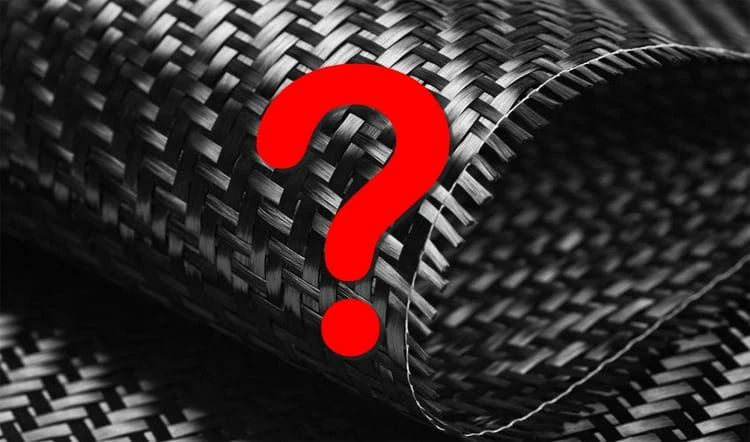How is Carbon Fiber Made?
 While the basis of carbon fiber—fibers made of carbon—sound simple enough, there are myriad ways to combine these relatively simple fibers, often with other products, to create the stronger, stiffer, and lighter materials highly favored by design engineers for modern high-tech projects.
While the basis of carbon fiber—fibers made of carbon—sound simple enough, there are myriad ways to combine these relatively simple fibers, often with other products, to create the stronger, stiffer, and lighter materials highly favored by design engineers for modern high-tech projects.
Carbon Fiber Precursors
Carbon fiber always begins with an organic polymer, known as the precursor. About 90% of the time, that precursor is polyacrylonitrile (PAN). Sometimes rayon or petroleum pitch is used instead. Organic polymers consist of long strands of molecules bonded by carbon atoms. Precursor composition varies slightly by manufacturer, and the exact composition is usually a closely guarded trade secret.
During the manufacturing process, gases, liquids, and other materials might be added to create various properties in the carbon fibers. Sometimes a specific effect is sought; other times, a specific reaction or preventing a specific reaction is the goal. Again, the exact combination of process materials is usually a corporate secret.
Carbon Fiber Manufacturing Process
Once the right combination of process materials is achieved, the precursor is pulled into long strands or fibers, then heated at elevated temperatures in an inert atmosphere (pyrolysis) to achieve carbonization. Carbonization expels most of the non-carbon atoms, leaving long, tightly woven chains of carbon atoms with only a small amount of non-carbon material remaining. This process usually consists of five steps:
- Spinning—The precursor is mixed with other materials, and then spun into fibers. These fibers are then washed and stretched.
- Stabilizing—Carbon fibers must be chemically altered before carbonization to make them more thermally stable by changing their linear atomic bonds to ladder bonds. Fibers are heated in air to around 200-300°C for 30 minutes to two hours. This heating process forces the carbon atoms to pick up oxygen atoms from the air and rearrange the molecules into a more thermally stable bonding pattern. This exothermic process must be carefully controlled to prevent overheating of the fibers. There are a variety of processes used to stabilize carbon fibers.
- Carbonizing—After the fibers are thermally stable, they are heated to 1,000-3,000°C for several minutes without oxygen. The lack of oxygen keeps the fibers from burning up in such high heat. During this process, it is important to keep the gas pressure inside the furnace higher than the air pressure outside the furnace and to keep the fiber entry and exit points sealed to prevent oxygen from entering the furnace. At this high temperature, the fibers expel their non-carbon atoms, and the remaining carbon atoms form tightly bonded carbon crystals. These carbon crystals align parallel to the long axis of the carbon fiber.
- Surface Treatment—The carbonization process leaves the fibers with a smooth surface that doesn’t bond well with epoxies and other materials used in making composite products. The surface is therefore oxidized slightly. Oxidation gives the surface better chemical bonding properties while also etching the surface to allow chemicals to better adhere to it. The fibers are sometimes immersed in gases like carbon dioxide, air, or ozone or liquids such as nitric acid or sodium hypochlorite to oxidize them. Other times, oxidation is achieved through electrolysis by immersing the positively charged fibers in a bath of electrically conductive materials. Whatever the method used for surface treatment, it is vital that it is performed under careful, expert supervision to prevent the introduction of surface defects that could lead to material failure further down the road.
- Sizing—Once oxidation is achieved, the fibers are coated to prevent damage as they are wound onto bobbins or woven into fabrics. The coating process is known as sizing, and the sizing materials are selected carefully to be compatible with the adhesives used to form composite structures. Coating materials might include polyester, nylon, urethane, or epoxy.
Once carbon fibers are sized, they are wound onto bobbins and loaded into spinning machines to be twisted into yarns of various sizes. These yarns can then be woven into fabrics or formed into composites.
